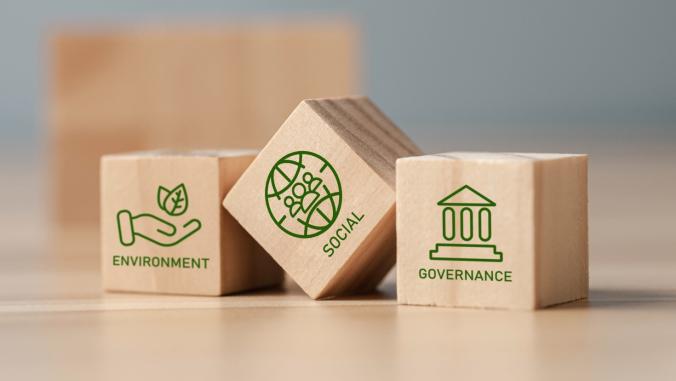Here's how cities are leading at COP21
The limelight is on nation-states at COP21, but cities around the world are getting serious about climate action.

Even as world leaders at COP21 in Paris work to chisel out a meaningful international climate change action agreement, leaders at the municipal level are making moves to step up mitigation and adaptation efforts.
Despite covering only 2 percent of the world’s land area, the world’s cities account for as much as 70 percent of global greenhouse gas emissions, according to UN-HABITAT. And with more than half of the world’s population currently living in urban environments, which is fast-approaching 60 percent by 2030, cities are where the most risk for exacerbating and opportunity for fighting climate change lies.
Here are some city-focused highlights from COP21 so far:
100RC mayors commit $5 billion to resilience-building
On Dec. 2, the inaugural "Resilience Day" at COP21, 100 Resilient Cities — Pioneered by the Rockefeller Foundation, which focuses on improving city resilience in cities across the globe, announced the first round of signees to its 10% Resilience Pledge.
The mayors of 21 cities, including Rio de Janeiro, Mexico City, Rotterdam and New Orleans, have pledged to commit 10 percent of their city's budget to resilience-building — amounting to more than $5 billion. The pledges will directly benefit 33 million people worldwide, 100RC said, and this number is expected to rise as more mayors sign on.
Mexico City Mayor Miguel Ángel Mancera alone has promised to devote over $1 billion to build its resilience to shocks and stresses related to climate change.
100RC said the pledge embodies a key principle of resilience: a commitment to making sure each project the city engages in achieves multiple goals, allowing the city to get the most return out of every dollar rather than spending any additional money. Projects include everything from deep energy retrofits and floodwalls to neighborhood revitalization and rapid bus transit.
Cities that sign the pledge will have access to up to $5 million in goods and services from 100RC’s "Platform Partners" — a collection of organizations from the private, public, NGO and academic sectors. These services are intended to help maximize the success of city resilience-building efforts and amplify the impact of their new, stronger budgetary commitment to resilience, 100RC said. Cities can invest the new funding both into current projects and new ones.
C40 recognizes world’s most sustainable cities
Boston, Johannesburg, Rotterdam and Nanjing were among the 10 cities recognized by the C40 Cities Climate Leadership Group as winners of the third-annual C40 Cities Awards, which recognizes global cities for leadership in tackling climate change across key sectors.
Cape Town, New York, Stockholm, Vancouver, Wuhan and Washington, D.C. also were recognized for demonstrating "exceptional innovation and ambition to build low carbon and climate resilient urban communities."
Boston won the award for "Smart Cities & Smart Community Engagement," for the success of Greenovate Boston, which unified under an umbrella brand the city’s various climate action programs in energy, transportation, air pollution, food and solid waste, and established a broad platform for communication, community engagement and recognition of achievement. By simplifying community outreach, residents are more able to become aware of and participate in Boston’s various climate action initiatives, C40 said.
Vancouver was recognized for "Carbon Measurement & Planning" due to its "Greenest City Action Plan," which established a vision to become the greenest city in the world by 2020. The plan comprises 10 goal areas covering jobs, carbon, the built environment, the natural environment and food, each with specific 2020 targets that address three overarching focus areas: zero carbon, zero waste and healthy ecosystems. With around 160 actions already completed or underway, the city appears to be on track to hitting its targets.
C40 said it received more than 200 applications from 94 cities for the 2015 Awards, which were reviewed in partnership with sustainability think tank and consultancy Sustainia.
Cities can help close the ‘emissions gap’
On Friday, Michael Bloomberg, the former mayor of New York and the United Nations secretary general’s special envoy for cities and climate change, released a report (PDF) claiming that cities can help to close the "emissions gap," the divide between what countries have promised to do before the climate talks, and what is needed to avoid a rise in temperature above 2 degrees Celsius — which amounts to around 15 billion tons of carbon dioxide a year.
If cities take aggressive steps, the report said, they can help curb global emissions by 3.7 billion tons a year by 2030 — close to one-quarter of the gap. Measures to achieve these reductions include stronger energy-efficiency standards for new residential and commercial buildings; retrofitting existing buildings to be more energy-efficient; tougher rules for home lighting and appliances; promoting citizen use of public transit and bicycles, rather than cars; and capturing the methane released by landfills.
This can be accomplished because mayors have strong influence over key policies that influence emissions, such as building energy standards, urban planning and public transportation, the report said.
Recognizing the power of subnational governments to help national government reach climate action goals, 65 jurisdictions from 20 countries and five continents have signed or endorsed the Under 2 MOU, commiting to either reduce their greenhouse gas emissions 80 to 95 percent below 1990 levels by 2050 or achieving a per capita emissions target of less than 2 metric tons by 2050. The signatories collectively represent more than $17.9 trillion in GDP and 588 million people — if they represented a single country, it would be the largest economy in the world by GDP, surpassing even the United States.





